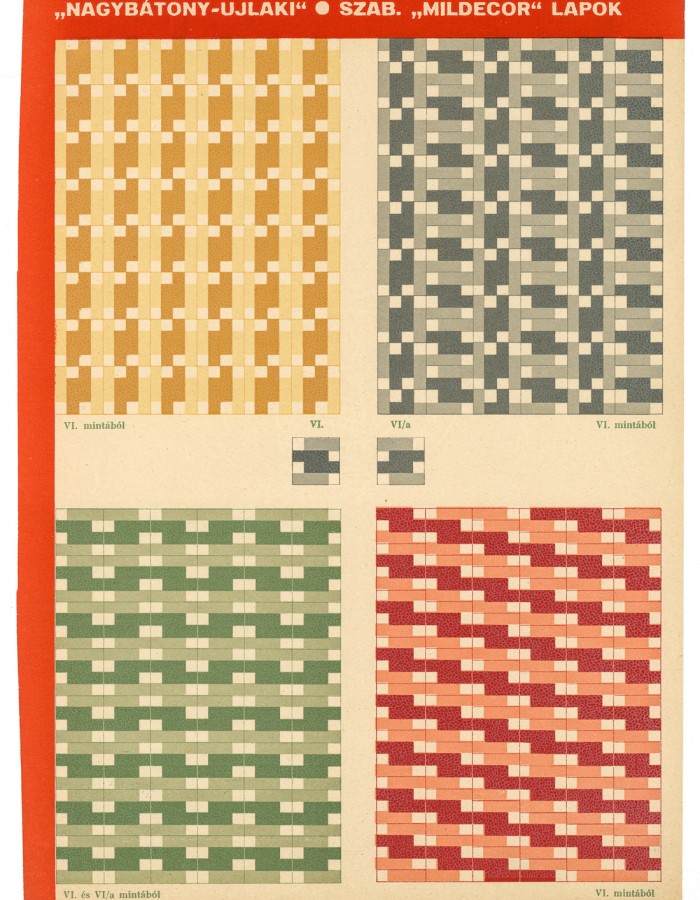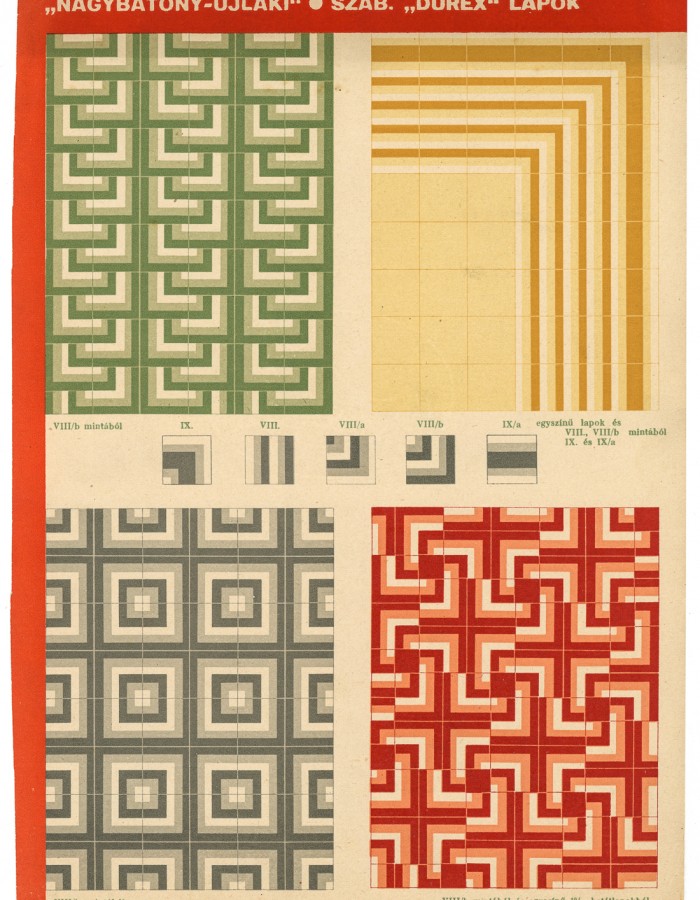“The industries of individual countries will never reach a proper level of culture and competitiveness until the collaboration between art and industry is ensured to a proper extent” (Dénes Györgyi)
Born 135 years ago and one of the most active Hungarian architects in the interwar years, this is what Dénes Györgyi (1886–1961) thought about the connection between the construction industry and the art of architecture. He worked not only as an architect, but also as an interior designer, and taught at the College of Applied Arts (now the Moholy-Nagy University of Art and Design) for more than 35 years, including being its director in 1945–1946. The HMA MPDC Hungarian Museum of Architecture preserves a significant portion of his estate, including schemes and documents on flooring systems of his own design. The catalogue pages displayed here document the essence of his flooring system and designs, which now can be viewed at a dwindling number of sites.
Györgyi placed great emphasis on his work in the other crafts associated with architecture. This was certainly due to the influence of his father, Kálmán Györgyi (1860–1930), an art critic who for many years was the editor for the periodical Magyar Iparművészet (Hungarian Applied Art). It is also shown by this flooring system he designed, which he patented in 1933. The architect granted the rights to make this system a reality to the Nagybátony-Újlak United Industrial Works. This company, which sold construction materials and flooring elements, trademarked these cement tiles in 1933 under the “MILDECOR” brand name. It was possible to configure diverse and dramatic floor patterns suitable for areas of varying sizes with these mass-produced 20x20 cm elements. The essence of the process was to provide a range of patterns by using the elements in combination with their neighboring tiles. This made it possible to make varied designs from the same elements, in contrast to other cement tiles on the market.
“In essence, it really brings to mind the simplicity of Columbus’s egg, but its results raise it to being a true tool for the most fantastic artistic concepts.” This is how it was written up in the Építőmesterek Lapja (Builders’ Journal).
The outstandingly decorative, geometrically patterned MILDECOR flooring was used throughout the 1930s and 1940s, particularly in buildings and exhibition interiors connected to Györgyi, but also in the lobbies and staircases of apartment houses, condominiums and public buildings designed by other architects. Examples in Budapest include the lobby of the Simplon Cinema (Gábor Preisich and Mihály Vadász, 1934), the Budapest Electrical Works’ Kazinczy Street transformer station (today the Museum of Electrical Engineering, Ágost Gerstenberger and Károly Arvé, 1934), and the Lónyay Street Calvinist Secondary School and Dormitory (Jenő Padányi Gulyás and Imre Tóth, 1943).
More can be heard about the history of the MILDECOR flooring system at a lecture by the author of this article that will be presented at the 2021 Látkép (Vista) conference to be held in September.
Fanni Izabella Magyaróvári
Pattern sheets from the Nagybátony-Újlak United Industrial Works catalogue. HMA HPDC Hungarian Museum of Architecture







